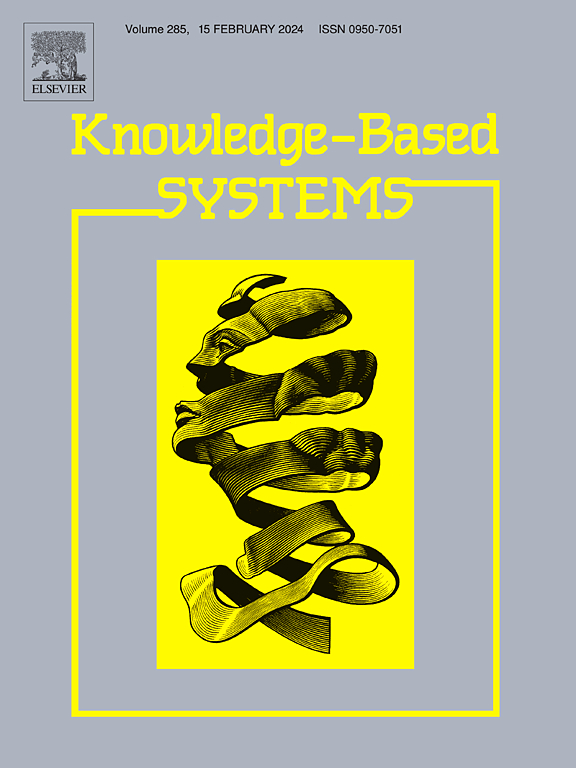高炉炼铁故障诊断的半监督高不确定深度典型变量分析
IF 7.2
1区 计算机科学
Q1 COMPUTER SCIENCE, ARTIFICIAL INTELLIGENCE
引用次数: 0
摘要
高炉炼铁工艺(BFIP)在钢铁工业中具有至关重要的地位。BFIP可靠的故障诊断对于保证生产安全、提高效率和质量、降低成本、实现资源最大化利用至关重要。然而,建立有效的故障诊断模型受到各种挑战的阻碍,包括非线性、动态、广泛的噪声、标记数据的稀缺性以及大量未标记数据。针对这些问题,本文提出了一种新的BFIP故障诊断方法——半监督高不确定性深度典型变量分析(SHDCVA)。该算法包括三个主要部分,包括:(1)高不确定性非线性动态特征捕获,(2)鲁棒半监督框架构建,(3)模型求解和参数优化。首先,从概率的角度提出了一种高不确定性深度正则变量表示方法,该方法能够捕捉高不确定性非线性动态特征;高不确定性可以有效地处理数据噪声,提高下游故障诊断模型的可靠性。此外,本文提出了一种鲁棒的半监督分类框架,可以有效地利用有限的标记样本和大量的未标记样本。有监督部分通过训练信号退火法(TSA)控制标记样本的释放,以防止过拟合,而无监督部分通过应用对抗性扰动来增强模型平滑,以增强鲁棒性。随后,设计了一种有效的计算方法来产生对抗性摄动,并构造了总体目标。最后,通过使用真实BFIP数据的实际案例研究证实了SHDCVA的有效性。本文章由计算机程序翻译,如有差异,请以英文原文为准。
Semi-supervised high-uncertainty deep canonical variate analysis for fault diagnosis in blast furnace ironmaking
Blast furnace ironmaking process (BFIP) is of paramount importance in the steel industry. Reliable fault diagnosis for BFIP is crucial to ensure production safety, improve efficiency and quality, reduce costs, and maximize resource utilization. However, establishing effective fault diagnosis models is hindered by challenges including non-linearity, dynamics, widespread noise, and the scarcity of labeled data alongside an abundance of unlabeled data. To address these issues, this paper proposes a new fault diagnosis method for BFIP called semi-supervised high-uncertainty deep canonical variate analysis (SHDCVA). The proposed algorithm consists of three main parts, including (1) high-uncertainty nonlinear dynamic feature capture, (2) robust semi-supervised framework construction, and (3) model solving and parameter optimization. Firstly, a high-uncertainty deep canonical variate representation method is proposed from a probabilistic perspective, which can capture high-uncertainty nonlinear dynamic characteristics. The high-uncertainty property can effectively deal with data noise and enhance the reliability of downstream fault diagnosis model. Moreover, this paper proposes a robust semi-supervised classification framework that can efficiently utilize limited labeled samples and a large amount of unlabeled samples. The supervised part controls the release of labeled samples by training signal annealing method (TSA) to prevent overfitting, while the unsupervised part enforces model smoothing by applying adversarial perturbations to enhance robustness. Subsequently, an efficient computational method is devised to generate adversarial perturbations and the overall objective is constructed. Finally, the effectiveness of SHDCVA is confirmed through a practical case study utilizing genuine BFIP data.
求助全文
通过发布文献求助,成功后即可免费获取论文全文。
去求助
来源期刊

Knowledge-Based Systems
工程技术-计算机:人工智能
CiteScore
14.80
自引率
12.50%
发文量
1245
审稿时长
7.8 months
期刊介绍:
Knowledge-Based Systems, an international and interdisciplinary journal in artificial intelligence, publishes original, innovative, and creative research results in the field. It focuses on knowledge-based and other artificial intelligence techniques-based systems. The journal aims to support human prediction and decision-making through data science and computation techniques, provide a balanced coverage of theory and practical study, and encourage the development and implementation of knowledge-based intelligence models, methods, systems, and software tools. Applications in business, government, education, engineering, and healthcare are emphasized.
 求助内容:
求助内容: 应助结果提醒方式:
应助结果提醒方式:


